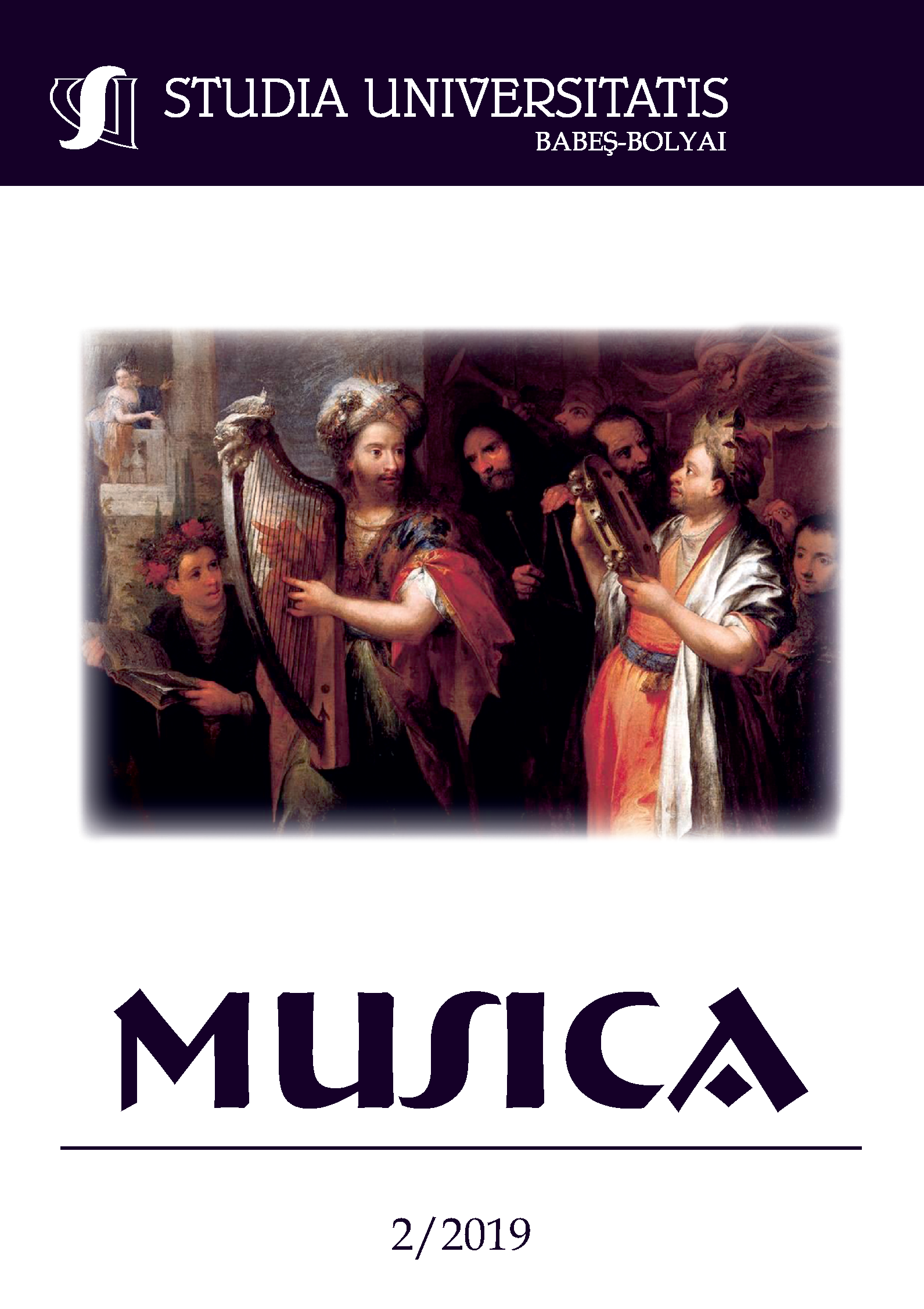FISSURES FOR ENSEMBLE
DOI:
https://doi.org/10.24193/subbmusica.2019.2.14Keywords:
contemporary, music, ensemble, fissures, composition, texture, gesture, allusion, techniques.Abstract
The present work[1] accomplishes such a process that does not have a clear exposition, nor the linearity of the main conflict, not does the denouement have a clear conclusive character – so in this sense the musical discourse neglects the traditional dramaturgical principles. As when we talk about fissures, cracks: we see them, we perceive their forms, we can even study them, but we do not know with confidence the factor whose effect generated the process of fissuring on the structure of the respective material, and we cannot predict whether the final fracture will occur or not. The whole process in its entire duration can take place in front of our eyes, or it may unfold with such a slow course of action that we cannot perceive its progress, which may result in a "motionless" tension. Therefore, the image that is placed in front of us is a proposal to watch, meditate, follow and study the small forms. We can look at every single small detail from a microscopic view or at the whole entity as one single unit from a macroscopic view, but a successive alternation of these is also possible. So in the musical sense we are talking about a continuous organic evolution with interspersed stagnations. The musical material is incessantly transformed, divided, "fissured", fragmented, gradually new small structures are created, some threads go forward together in parallel, others alternately, sometimes some of them are merged and take a new direction and there are elements that come back several times and others that stop quickly after starting. All these are charged with various types of tension, which result in accumulations, dissolutions and different contrasts. Some of the microstructural organizations produced in this way, are transposed at macrostructural level.
The musical discourse develops several different materials, from short gestures or just signals, through some melody allusions, to large surfaced timbre textures. Furthermore, some of the textures use controlled aleatoric techniques with various levels of freedom in different tempos and densities. In fact, in the whole dramaturgical unfolding of the piece the tempo, density, dynamic fluctuations of the successive events oscillate on a large spectrum, which affects continuously the mechanism of time perception. Also, in this sense, sometimes a contrasting duality emerges caused by the uneven pulsation of the instruments playing and the stable pulsation of the metronome.
The chamber ensemble consists of: flute, oboe, clarinet in Bb (also bass clarinet in Bb), violin, percussions and piano.
[1] The piece was written in 2015 for the contemporary music project called Panoramic Componistic Contemporan (Contemporary Composition Panoramic), and its world premier was on Ferbruary 25th 2015 at the „Gheorghe Dima” National Music Academy, Cluj-Napoca, performed by Ramona Țuțuianu (flute), Ruxandra Sericiuc (oboe), Krisztina Nagy (clarinet/bass clarinet), Ioan Dărăban (percussion), Mira Gavriș (piano), Sonia Vulturar (violin), conducted by Dalma Kovács.
Recording on: https://soundcloud.com/aron-torok-gyurko/aron-torok-gyurko-fissures-2015
Downloads
Published
How to Cite
Issue
Section
License
Copyright (c) 2019 Studia Universitatis Babeș-Bolyai Musica

This work is licensed under a Creative Commons Attribution-NonCommercial-NoDerivatives 4.0 International License.



